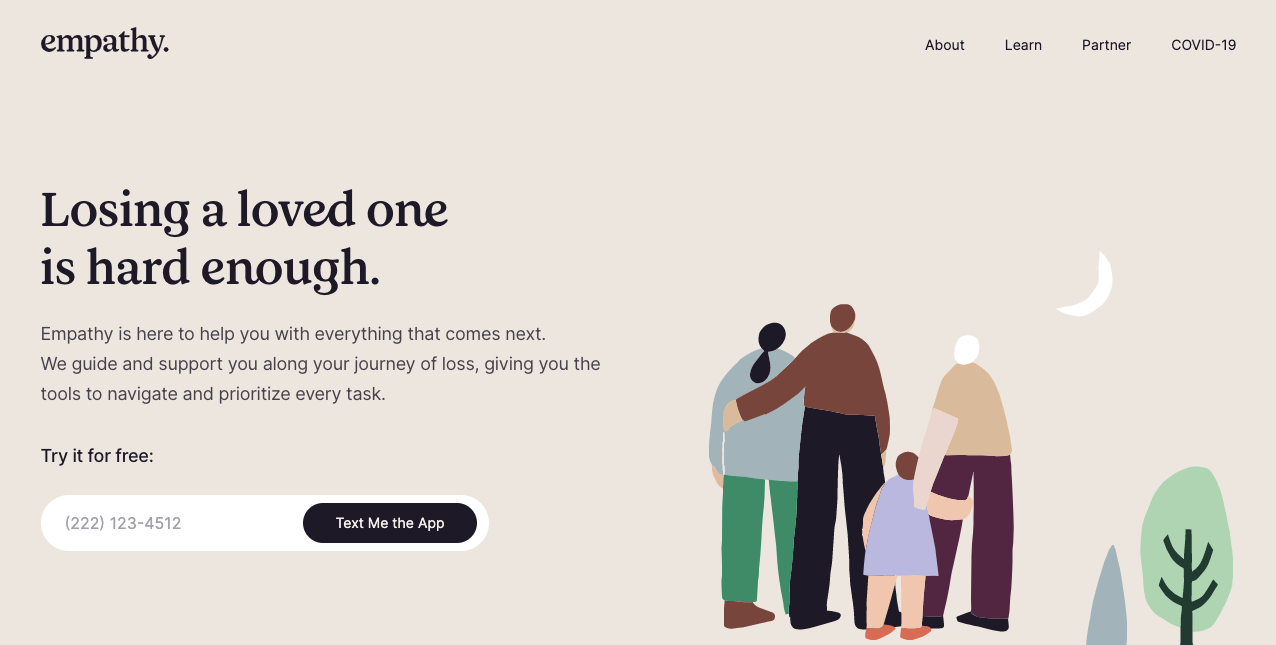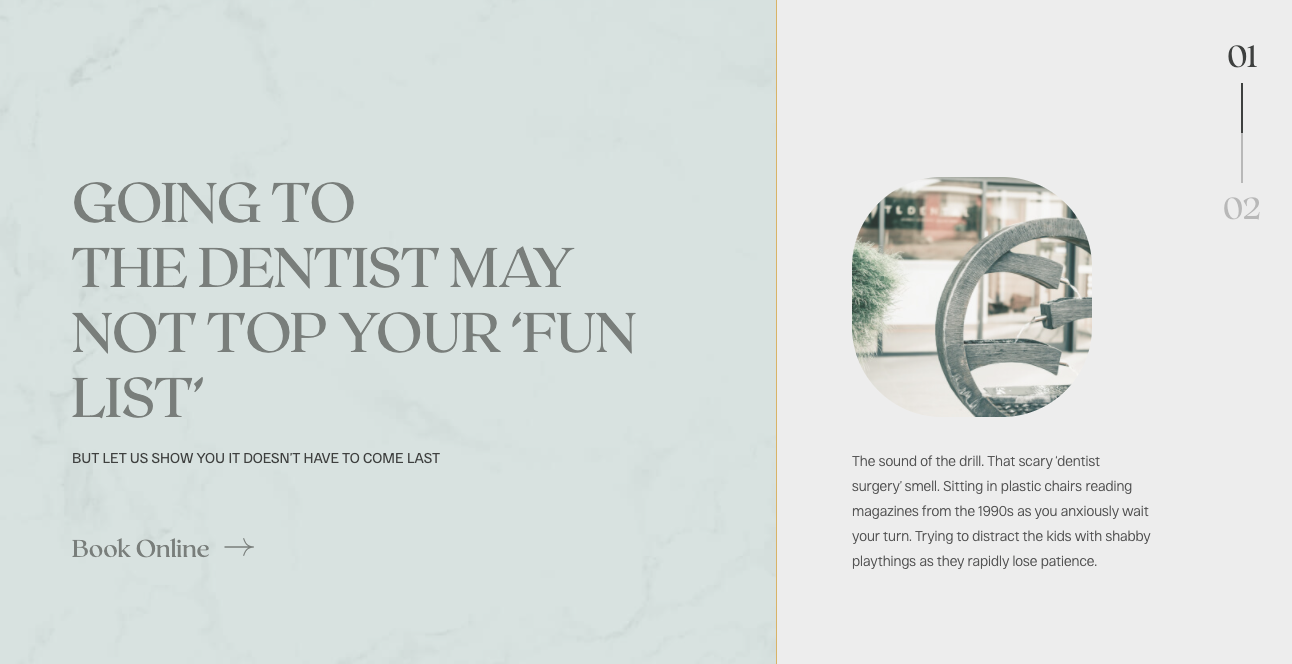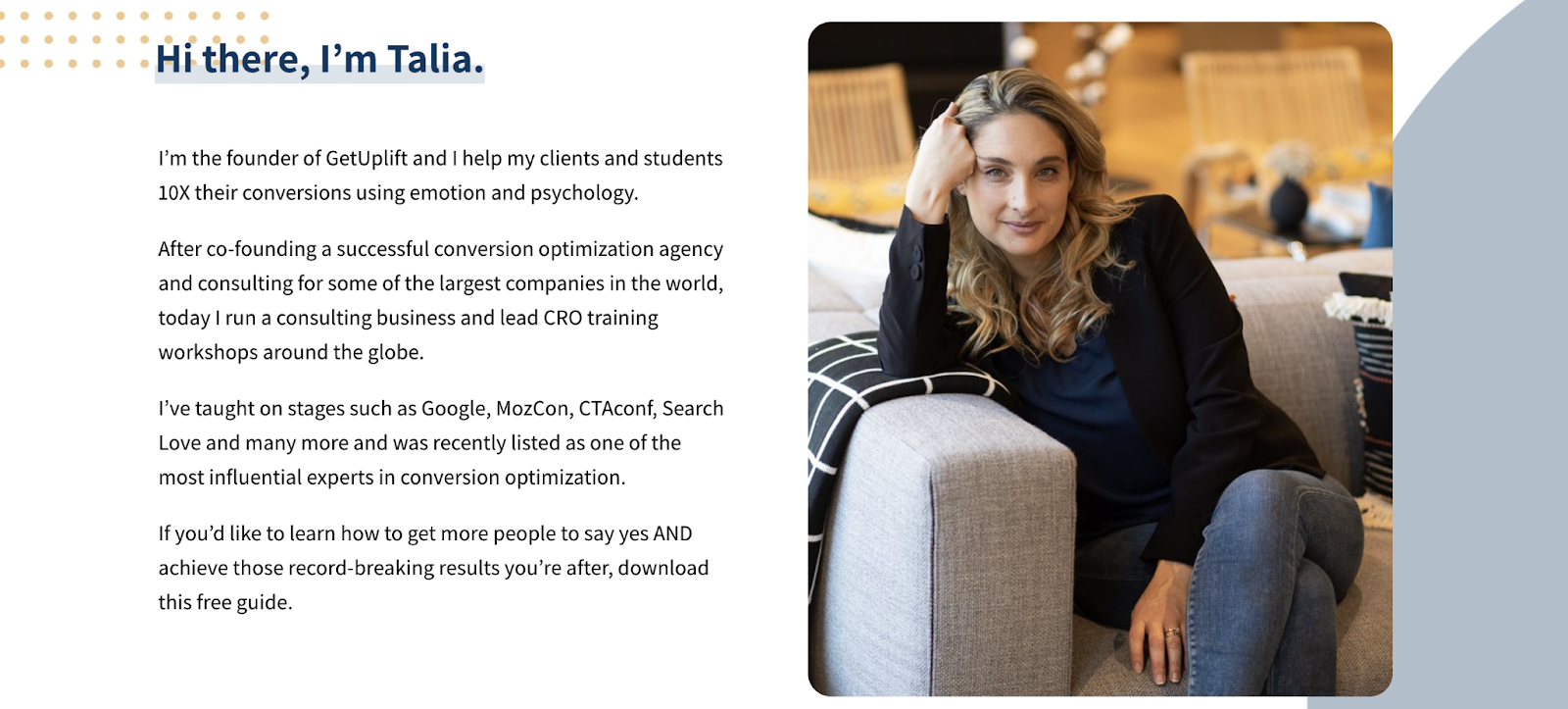Let’s talk about landing pages.
If you’re an entrepreneur, coach, consultant, or small business owner (and in the business of converting prospects into customers), you need a landing page.
And, just so we’re on the same page:
A landing page is a single webpage people visit (or “land on”) after clicking on an ad, email link, social media link or campaign.
Its goal is to get your prospect to take one action on the page (one action only). For example: Request a call, contact you, sign up to your email list or purchase a product.
The landing page is the single most important element for driving conversions, which is why brands spend a LOT of time optimizing them.
There are countless platforms for building landing pages, and thousands upon thousands of articles with advice, tips, best practices and examples of landing pages, demonstrating just how important a landing page is to your business.
Table of Contents
Why landing pages generate more conversions than a website
#1 The landing page is dedicated to ONE goal only.
While your website features all your different services and offers, the landing page focuses on one goal and one goal only.
As a single page (with no external links or any other offers) it ensures your prospect won’t get distracted by other solutions, offers, and any “irrelevant” information for their decision.
It keeps your prospect highly focused on taking one action.
For example, if your goal is to get prospects to sign up for a free webinar, everything on the landing page will be about that webinar, leading your prospects to sign up for it.
#2 A landing page provides clarity and actionability
Done correctly, a landing page makes it clear to your visitors what action you want them to take. The page focuses on one specific type of prospect who needs your offer.
Essentially, while your website gives visitors many options to choose from, the landing page tells them exactly what you want them to do and includes several call to action buttons that make it easy for them to take action and take advantage of the offer in front of them without getting distracted or lost in a sea of information.
#3 A landing page keeps you focused on your goal.
Other than keeping your audience focused, the landing page also helps you stay focused.
Once you declare a single goal for the page, it’s far easier to plan and create the landing page. Oftentimes, creating any kind of content for a website, page, or campaign can lead to a “catch all” situation, in which we’re trying to address everyone, and include all our offers and options so we “don’t miss out on anyone.” However, with a landing page you can focus on one specific pain point your offer solves, and ensure the copy and design match the struggles and desired outcomes your prospect is trying to achieve.
#4 A landing page helps you measure and track results.
A landing page makes analyzing and optimizing for more conversions easier, by giving you a specific goal to track.
Once you’ve determined the goal of your landing page, you will be able to see its results in Google Analytics and quickly know what needs to be optimized. As opposed to your main website where you may have different goals (e.g. brand awareness, contacts, leads, social shares, and so on), the landing page allows you to measure the success of your work quickly and decisively. If you’re trying to increase your email subscribers on the page, you’ll be able to measure its success easily. Once traffic starts flowing to the page, you can simply check: How many subscribers are you getting? And is this what you were expecting? If not, you can optimize the page to convert your traffic to more email subscribers and stay focused on that only.
#5 A landing page reduces your cost per acquisition.
Landing pages can be very helpful when it comes to running ads. If you set up an ad and direct people to your website, they are likely to get lost in everything you have to offer and end up increasing your cost to convert them. However, if you direct them straight to a landing page with a focused call to action, they will know exactly what you want them to do and are more likely to take action on the landing page, reducing the cost for you
#6 A landing page helps identify what’s not working.
There are typically three reasons that a landing page doesn’t convert well:
- You’re sending the wrong traffic to your page. This can be fixed by analyzing how people are finding your page.
- The landing page isn’t persuasive enough. This is where you would need to analyze your copy and images to determine what you’re missing.
- Your offer isn’t a match for your audience, and you need to optimize your service
All of these can be measured and identified far quicker than trying to analyze your entire website.
Two steps you must take before creating your landing page
Now that we’ve established that you need a landing page, let’s look at how you can create a simple landing page that draws your reader into your offer.
From a technical stand point, my best tip for creating a landing page quickly is to use a tool like LeadPages, Unbounce, or any other landing page builder, and take advantage of the many templates that they offer.
Too many times I see people trying to create their own landing pages from scratch, and wasting a lot of their time (and frustration) on trying to piece things together. Using a readymade template eliminates that completely, and allows you to focus on what matters most: the content.
Before creating any landing page (or writing a word of copy) you must first start with two important steps that cannot be skipped:
Step 1: Setting a goal for your landing page.
Planning is everything. Planning your page allows you to stay focused and on target, and to analyze it later. Before you set up your landing page, you need to determine your one goal.
Some possible goals include: opting in to your newsletter, booking a call, registering for a webinar, scheduling a demo, purchasing a product, or enrolling in a course. Define your end goal and then think about who needs the offer. Your entire landing page should focus on this one goal. There should be no other calls to action.
Step 2: Define your target audience.
Once you know your goal, it’s time to think about who would be the best fit for your offer.
It’s important to remember that not everyone will be a good fit and that if you try to speak to everyone, you’ll end up speaking to no one.
Instead, think of a specific person that could benefit the most from your offer. Think about their pain and what will make them take action on your page. It’s important to identify their pain and share your solution in a way that makes them see how their pain will be solved.
If you keep the emotional triggers of this ideal reader in mind while planning your page, you’ll end up with a better landing page.
As you know, most landing pages are very different from each other. They target different audiences, offers and content. When done correctly, your landing page will include the story, design, persuasive principles, and copy that resonates with your specific audience (instead of a generic landing page that’s a “catch-all” or a page that simply copies competitors).
However, if you’re just getting started, there are a few elements and sections every landing page should include. Over the years I’ve tested hundreds of different landing pages in multiple industries, and without a doubt, when these elements exist on a page, they have a higher chance of increasing conversions.
So, how do you know what content to include on the landing page? Often times, it’s easy identifying what action you want people to take on the page, but far more complicated figuring out what you need to say to your prospects to convince them to actually convert.
Let’s breakdown the different sections of your landing page and what content each section needs to include.
4 Elements every landing page should include
The Landing Page Header
Your landing page header is the first thing people see when they land on your page. This is the section that is considered “above the fold” (what people see before they start scrolling). Here’s what your landing page header needs to include:
- Your Unique Selling Proposition: A headline that focuses on the results your solution has to offer. Think of your landing page headline as “the big promise” – the one big thing people will walk away with after converting (this shouldn’t really focus on your offer, but their results)
- The subhead that describes how you will make it happen for your reader. This is where you talk about your actual offer
- Bullet points to help people skim and see what they’re going to get.
- A hero image that helps people immediately feel and connect with your offer (here’s how to choose images for your landing page)
- Your first call to action button.
Let’s look at some examples:

In this landing page, the headline spells out the result and the subhead explains the process, how it’s going to happen (e.g paint-by-numbers email templates)

On her landing page Asia Bribiesca-Hedin uses bullet points to explain what you’re going to learn during how workshop to take control of her prospect’s professional life.

Though the headline in empathy’s landing page isn’t a result, it does focus on the pain the prospect is feeling and the subhead explains how the pain can be subsided.
,Some people will be ready to commit early on your page, which is why you have a call to action within the header section. However, some people may need more information depending on their stage of awareness (where they are on the buyer journey), and that’s where these next sections come in:
The “Why Us” Section
The “why us” section is one of the most important sections on your landing page. It breaks down the story and takes your reader on a journey from their pain point to a solution.
People need to see the connection between their current challenge, and your offer.
Here’s what this section usually looks like:
- Pain – you start by stating their pain and sharing that you know how they’re feeling.
- Agitation – You explain how this pain is affecting their life in many different ways, and emphasis the importance of solving it.
- Solution – You introduce your offer and explain why it will work for them (even if they’ve “tried everything” before.
This is the pain, agitation solution copy formula (or PAS). We use it all the time at Getuplift and we’ve seen some incredible results with it.
One great example of using this framework is by a dental practice:

First they walk you through the “scary dentist chair”, the unchanged 90’s magazines and the need to distract yourself to avoid the fear.

In step 2 they introduce their new method and describe how they make visiting the dentist less painful.

In this landing page I breakdown what’s wrong with landing pages. Why we pour so much time and effort into them and never get the results we want, AND give real-life examples of things that have happened. to me, and others.
The Social Proof Section
The next section is where you provide social proof for your reader. This can come in many different forms and is a great way to build trust with your reader:
- Testimonials,
- Reviews,
- Data & statistics,
- Certifications,
And any other supporting data that will help your reader view you as an expert who can help them. Learn how I leverage social proof to 10X conversions for my clients, here.



The About Section
Many people choose to leave the about section off of their landing page but it’s a very important piece. This gives your reader the chance to learn a little more about the person offering a solution. Even though this section is about you, it’s still important to focus on your reader and their emotions. Share a story of how you’ve been where they are and found a solution that works. Share the reason for your offer and how it can change their lives just like yours. By the end of this section, you want them to understand how you’re going to serve them with your offer.


Don’t forget to include one last call to action button at the end of your landing page. If they’ve read through the entire page your call to action button will remind them that there’s a next step they can take to solve their pain.
Landing pages are a useful tool for reaching your business goals. They allow you to focus on one specific goal at a time while connecting with your ideal prospect.
It’s important to remember that a landing page doesn’t have to be perfect before you hit publish. It’s a working page that can be analyzed and improved regularly to bring in the very best leads for your business. So, even if your landing page doesn’t feel “perfect,” go ahead and hit publish and start sharing it with others so you can keep optimizing it and get the results that you need for your business.
To get started with creating your landing page, check out our complete FREE guide here
Facebook Comments
Powered by Facebook Comments

